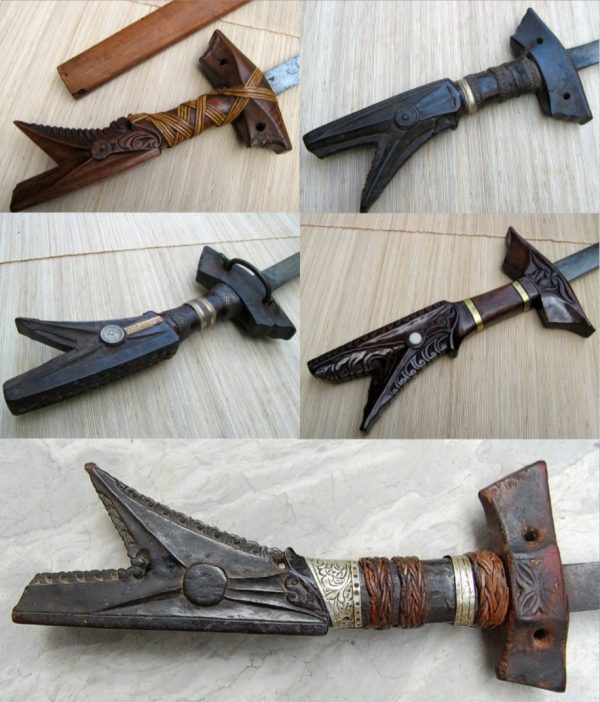Sinawali, That is Just a Partner Stick Drill Right?
Contents
If you pictured the Sinawali drill set, you might picture two guys with sticks striking repeatedly in a pattern of high low high low etc…
If you asked someone, “Why do you practice that?” you might hear a response along the lines of “it teaches rhythm, targeting, and timing.
Once you have been practicing it for years then you will learn the traps, counters, etc… from it”.
The real truth is that there is so much engrained in that single sequence that you could train every aspect of modern Arnis from the Sinawali alone.
The possibilities are limitless.
How do you learn Sinawali?
The single Sinawali is made up of a high angled strike to the temple area and followed up with a low strike to the knee level with the same cane.
You then rinse and repeat with the opposite cane. Typically, do this with a partner at an adequate distance to reach out for the target in space.
If you are too close, you will definitely end up whacking each other’s fingers. First start at the exact distance that you are going to work from stationary. Once you get the hang of it, you and your partner will start to move while still maintaining the exact distance between you.
After that, you can start at non fixed distances and engage in the drill once you are close enough to strike. Focus on your opponent’s collar bone. If you end up watching their hands your hands will drift closer to their cane and eventually will crack your finger.
Start slow and focus more on precision to decrease the errors while training.
What is the next step?
I mean, after you have the basic idea of what Sinawali looks like, what do you do with it next?
You start by mixing up the combinations of your pattern (low, high, low, high/ high, high, high, high/etc…). This experimentation process will help you learn every inch of the Sinawali.
Practice without a partner, on a striking target, and with multiple partners. After you have broken your brain trying every combination for your single Sinwali, you can start to use that experience to train in all the aspects of Arnis.
The next step after blunt weapon training is bladed weapon training. Pull out the blunted practice machete to discover some of the reasons behind arm and resting Arnis positions. You will notice for yourself that you have to leave room under your arms while practicing or else you will notice the potential to slice up the inside of your arms during application.
This methodology can help you practice swords, knives, nunchaku, rope weapons, etc…
Is that all?
Absolutely not. You can use the same form to practice your arnis hand to hand work.
Obviously you can imagine the high low variation of empty hand strikes that would go along with the Sinawali. You can apply every striking surface of your arm (palm, hammer fist, ridge hand, back fist, inner forearm, outer forearm, elbows).
The fun doesn’t end at striking. You can easily apply grappling to the pattern by reaching, gripping, and pulling.
These are all of the attacking applications for the sinawali pattern, but you can also use the form to train your passing series against high and low attacks.
Move your body in the opposite direction that your hand is moving. You only have to move far enough to avoid the strike. You will find that your high pass leads directly into your low counter strike. The reason you are striking low is because your opponent’s high strike leaves that area open.
Wrap it up
The power of the Sinawali pattern is in the fact that it is a single engagement, striking pattern, form that can help you train absolutely everything that you want to in modern Arnis.
If you apply this expansion process you can conceivably train any weapon that you want (tonfa, kama, war axe, tactical flashlight, extendable batton). Instead of trying to find multiple patterns and styles to train your modern Arnis, the Sinawali gives you one platform to practice them all. You can also buy some tutorials on Amazon which I recommend below.
Do you enjoy our article, :D. Help us to introduce this site to your friends and others.
Website:/
Facebook:https://www.facebook.com/Martial-Art-Skills-2268641086694320/
Twitter:https://twitter.com/Sterling101985

 Robert Sterling
Robert Sterling
Author
Teaching, Friendly, Young, Passion. Always wanna go up & down. Hey, you gotta live, do you?
I would like to add more useful articles for Martial Arts Community. Do you have any feedback for me? What can I do better for my blog?
Hope to receive your warm feedback.
Learn a way to train one of the most powerful aspects of modern Arnis. The Sinawali is something every modern Arnis student learns, but do you really know it?
